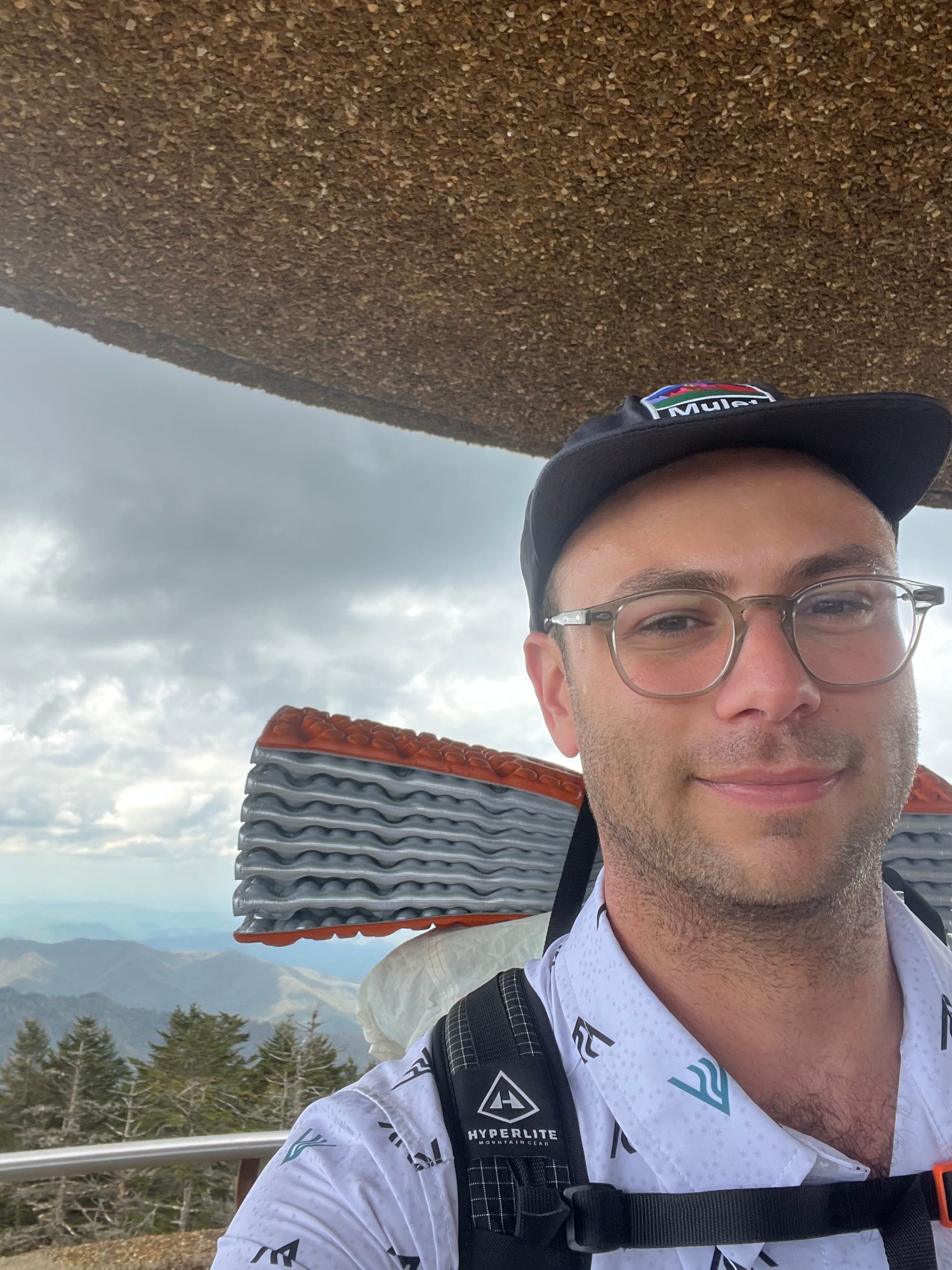There's No "E" in Smoky
She dropped her pack with a thud and stumbled over to the one patch of grass near the shelter, falling as though to make a snow angel. It turned out to be a mud pit. The trail provides, but to those of us at camp, it was evident this was not what she needed.
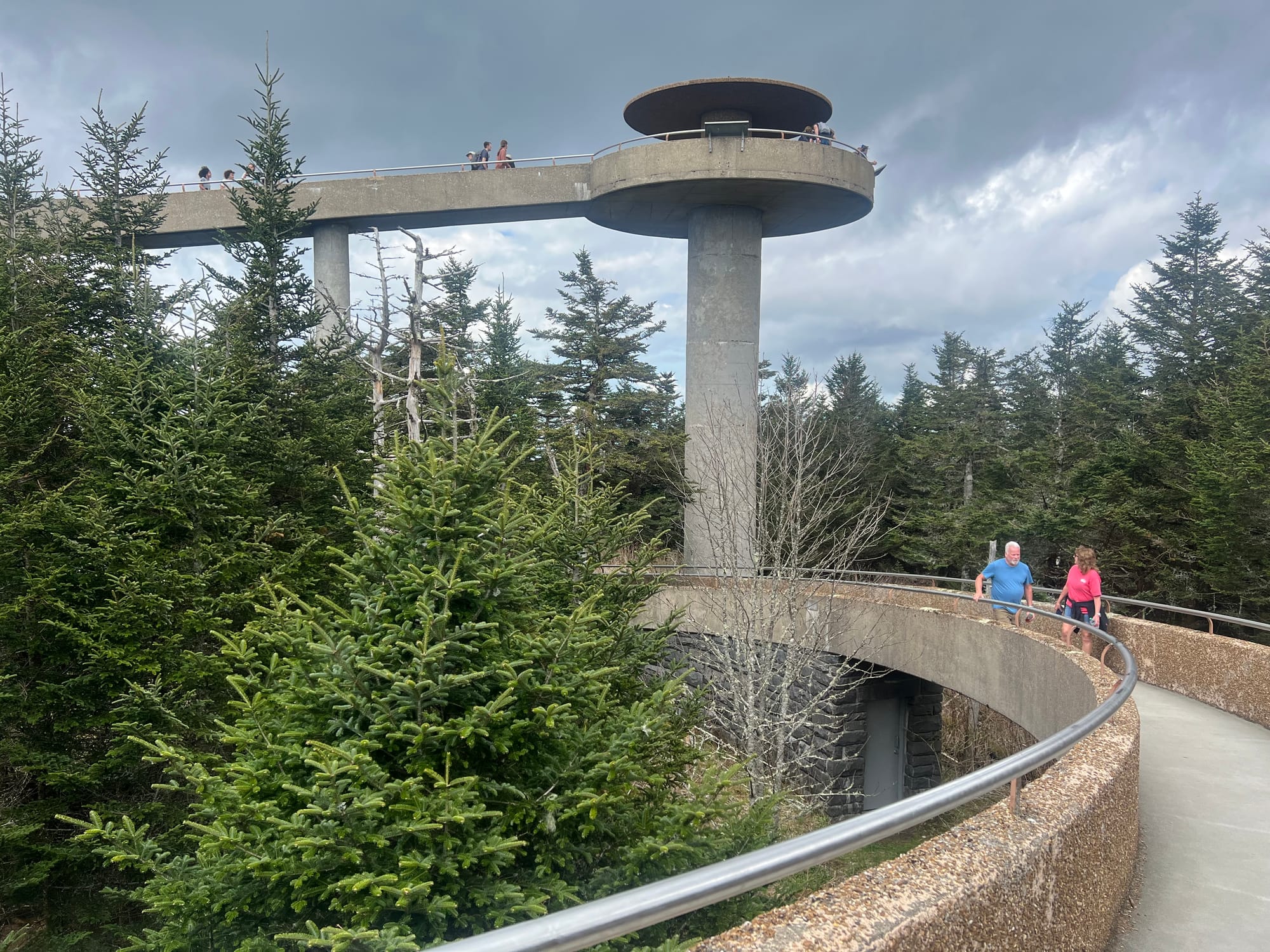
Somewhere in North Carolina, a guy named Leapfrog is walking along, blissfully unaware I’ve judged him. He may not be shocked he’s in the discourse, as he’s told me that other people know about him, and he doesn’t seem to mind. He’s a bit surprised, though. He told me how he’ll meet people on trail, and they’ll say, “Ohh, so you’re leapfrog.” “How do you know me, exactly?” He’ll ask with his Jack McBrayer Georgia accent.
He’s through-hiking the AT as we speak, and he’s hoping to catch up with his “tramily.” They’re doing pretty big miles, and he lost a day on them when he took a nearo, i.e., a near-zero mile day. By now, he ought to be at least nearing the Virginia border. He’s carrying what he says is a minimal set of gear, taking an ultra-light mindset, though his gear itself is not ultra light. At camp, he wears flip-flops and a puffy jacket, and on trail he’s in a tank top and awfully short shorts. Rather than boots, he’s got La Sportive trail runners. These were recommended by a popular shoe store some ~hundred miles in.
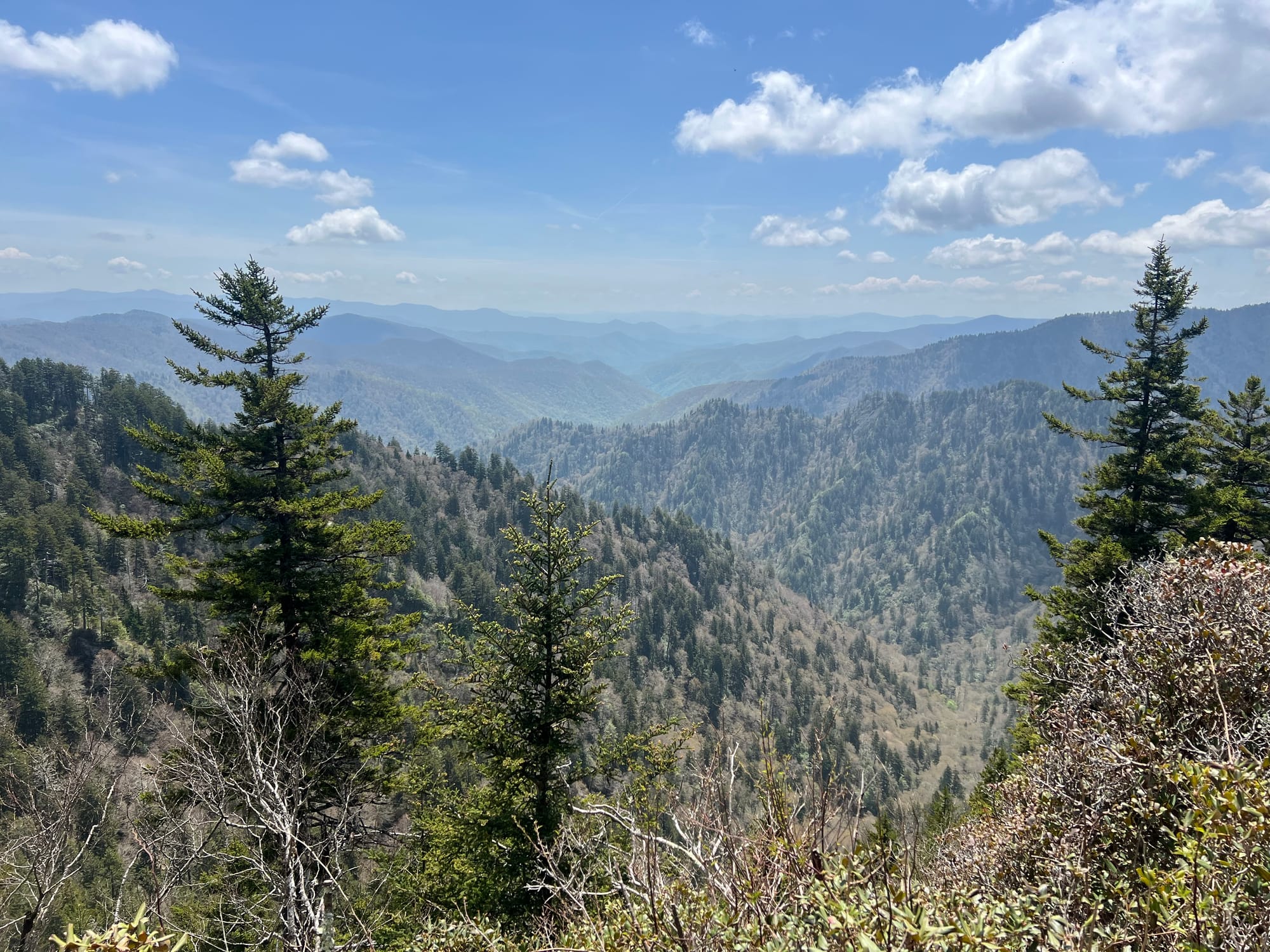
When I met him, he’d been on trail about three weeks, and I witnessed his first 20 mile day. He’d covered about 250 miles by the time he made it to Standing Bear Farm & Hostel, right at the edge of the Great Smoky Mountain National Park. That day marked by some tallies my 400th mile on trail, and 25th day. This is not to say I’m beating him in a pissing contest (I think I am, which means I’m losing. He doesn’t think about me at all.) but rather that I am no longer such a novice, already 18% or one pre-inflation restaurant tip through the whole thing.
When I hiked the 100 mile wilderness and Katahdin 4 years ago, I fell in with a ragtag bunch of hikers near the end of their journey. They’d completed it in pretty good time, 140 days, which is roughly what I’m pacing, though my time so far doesn’t count the ~2500 zeroes I’ve taken since August 2018. We had a lot in common, but I felt like an imposter next to them. One guy kept talking about cold-soaking everything. Dance Party asked why I wasted weight boiling water in a pot before pouring it into a different container to cook my noodles. Critter carried an aluminum water bottle she said had sentimental value for her, but otherwise the group had lightweight packs, sleeping bags, shoes, and everything in between. I never saw any of them carrying more than two liters of water. Lone Wolf may have run out of food just before Katahdin, but damnit if her pack wasn’t light. Plus, I had some extra food for her. The trail provides.
If some 20-25% of people who set out to hike the AT manage to complete it, many have already dropped out by the time they reach the Smokies. Those who get right over the Tennessee border to Damascus, VA evidently have an outsized chance of finishing, but the Virginia Blues will still vanquish many more. Leapfrog and his compatriots were just getting their trail legs, whereas Mona Lisa had once hiked like 60 miles subsisting off cereal and two gallons of milk.
Just as Leapfrog was holding forth about how he had heard not-so-good things about Standing Bear, how it was hippie-run (what hostel isn’t), dirty (at least 1800 miles of the 2200 are on dirt), and a perennial source of norovirus (not my experience), a woman with no trail name pulled into camp in tears. Jammies had been asking about her but was off getting water down the path.
Somebody recognized her two long braids and told her Jammies was here, looking for her. This brought on some tears of relief and cries of anguish. She dropped her pack with a thud and stumbled over to the one patch of grass near the shelter, falling as though to make a snow angel. It turned out to be a mud pit.
The trail provides, but to those of us at camp, it was evident this was not what she needed.
“It’s weeeeeeettttt” she wailed. I made eye contact with Whoopsie, a smoker with a mustache and a perfect radio voice. Neither of us could tell if she was for real. With a dozen people who didn’t know her real name sitting at some remove, it felt like a one act play. She had hiked to hell and back, it seemed.
In this case, hell was the extra half-mile each way down to the visitors center below Kuwohi, formerly Clingmans Dome, the highest point on the trail. Famously—though word seems to not have made it all the way—there is no running water. The monied can purchase canned water or some upmarket chocolate bars, but that’s it. This news made its way into the soliloquy. The chocolate bars cost $6 a pop. She had bought 6 of them.
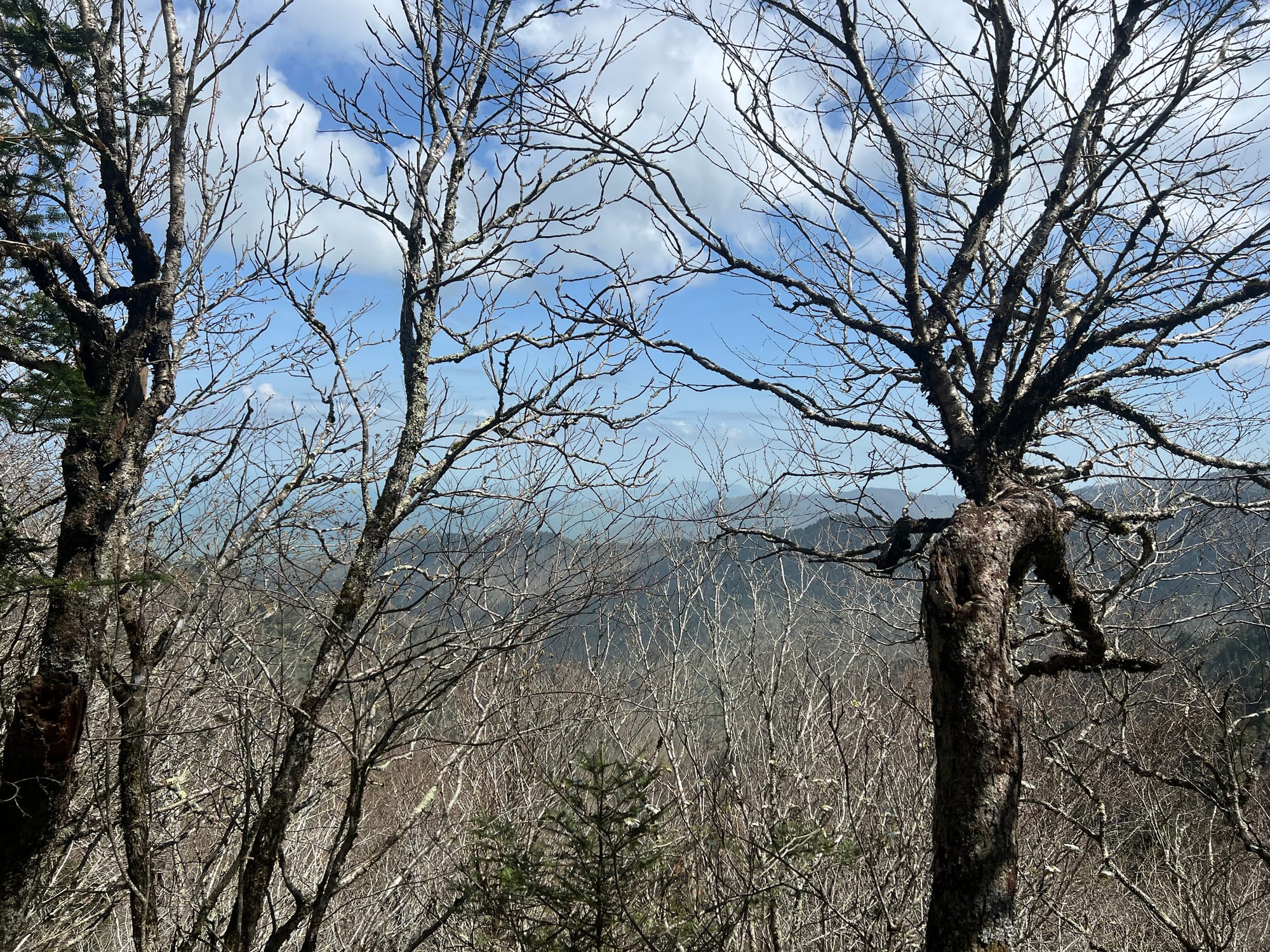
Camping is or ought to be cheap. It’s the activity of recreationally foregoing a roof. A site can cost between $0-10. I’ve amortized my tent down to ~$12 a night. For dinner this trip, I brought six packets of Easy Mac ($6.99 total), an old packet of instant noodles from my cabinet ($0), and a few miscellaneous shelf-stable foods from the store (~$8, all-in). Leaving aside breakfast, lunch, and snacks, my nightly expenses for three days came out to just about the price of those six candy bars.
Somebody along the way had floated goldilocks as a trail name, but that wasn’t very inspired. Felt more like what a gruff mentor might call her during her residency program were she on a medical drama. Unless the big spending were included in the gold. Cat-hole Queen was thrown out, but that feels a bit crass.
The conversation drifted away, though Cat-hole Queen remained stuck in the mud until Jammies returned. An Australian who was in the process of trying to get on an Australian reality show about survival started talking about how, by going to the lobby in just a towel, she got the Motel 6 to let her do laundry. Sometimes, you can make the trail provide.
I tried to defend Standing Bear’s honor to anybody who would listen. After all, Struggle Bus, who had given me my shuttle to the trail, mentioned they were currently building a new bathhouse with full plumbing, but he made a point to periodically use the port-a-potties. He took pride in hospitality and would never ask his guests to do something he wouldn’t.
The hostel’s resupply room seemed awfully comprehensive to me. I only bought a small gas canister, but I was told they’re pretty lax up there in the hills. You really ought to check the expiration date, was the accusation. I found this unfair because much of my food was expired, and I’d flown it in special from New York. The place was certainly more … outside … than Shaw’s Hiker Hostel up in Monson, Maine, but this was the Tennessee hill country! Pour a sweet tea, listen to some Billy Strings, and get over it.
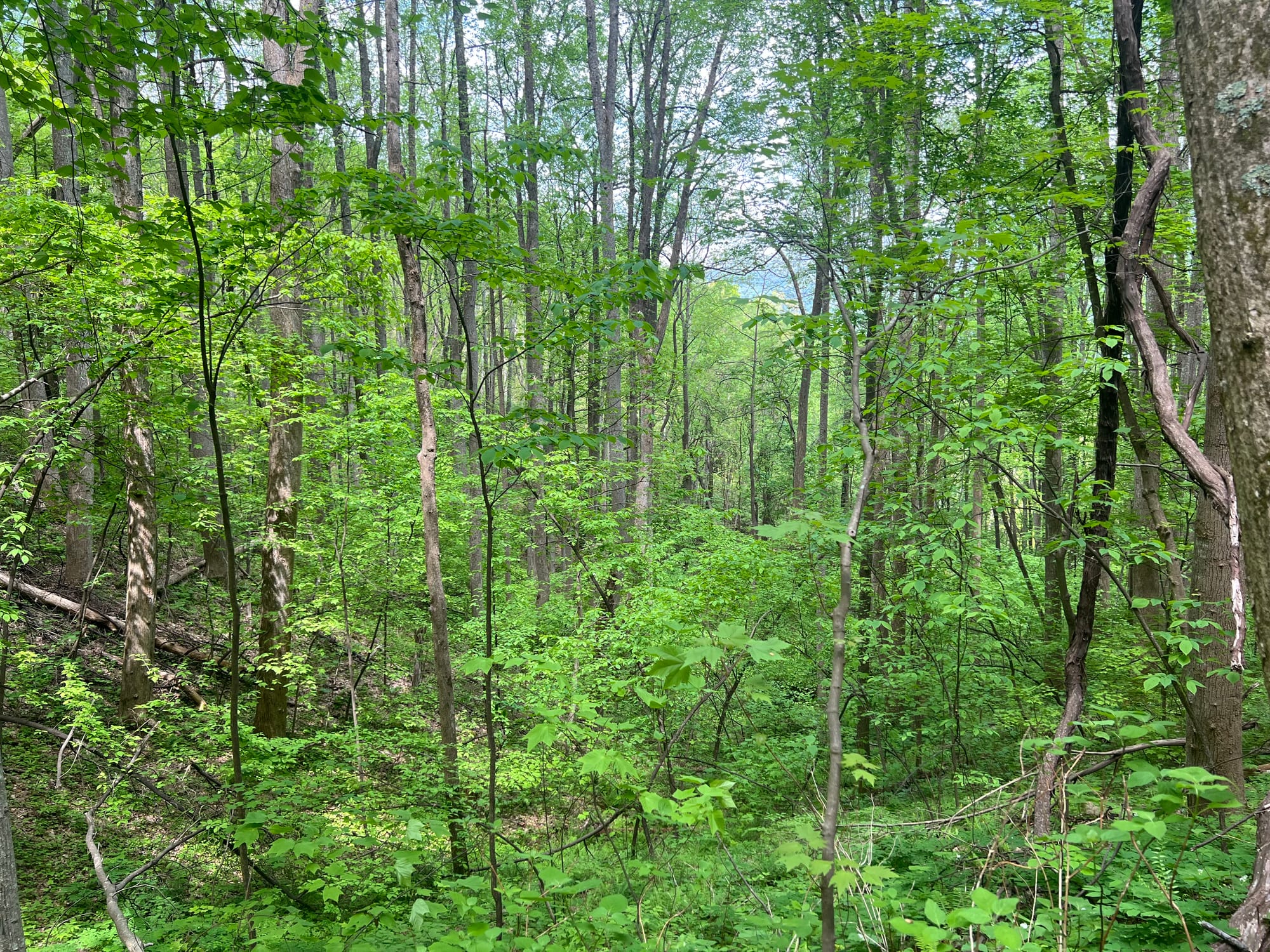
I had come to the Smokies to hike and see some temperate rainforests, not to judge. But the rainforests were mostly at lower elevations, around 4000’, and the trail ran the ridge, 5500-6600 feet up. So, my options were limited. I had a few thoughts about a few people's vibes.
Back in Maine, I’d sat at a bar the night before my hike, eavesdropping. Two hikers were talking about how they had finally, 125-ish miles from the end, gotten their kit totally dialed. “You should talk to more section hikers,” the other replied. “They have all this time between hikes, and they have jobs, so they can experiment more and figure out better what works for them.” At the time, I still had my old, ludicrously capacious pack. I used iodine to purify my water, so I had to wait 30 minutes after every fill-up opportunity. I still wore clunky, heavy boots with sponge-like water retention.
Since then, I’ve been trying to collect what lessons the trail furnishes me. I switched to a water filter, and I reuse the lightweight Smartwater bottles, and I stopped carrying so much. Last time out, I learned for myself that over-tightening a Sawyer water filter breaks it. I replaced my boots with trail runners, and those trail runners with trail runners that didn’t cause plantar fasciitis. I got a lighter sleeping bag, so I can exchange that weight for my stove and fuel. I remembered that I can bring Easy Mac, not just instant ramen. I learned to identify when I’m bonking, that more-frequent stumbles mean I’m hungry. The last couple miles on the 20-mile day were hardly my favorite, but they were much easier than they had been a couple years ago on the NJ section, to say nothing of back in New Hampshire.
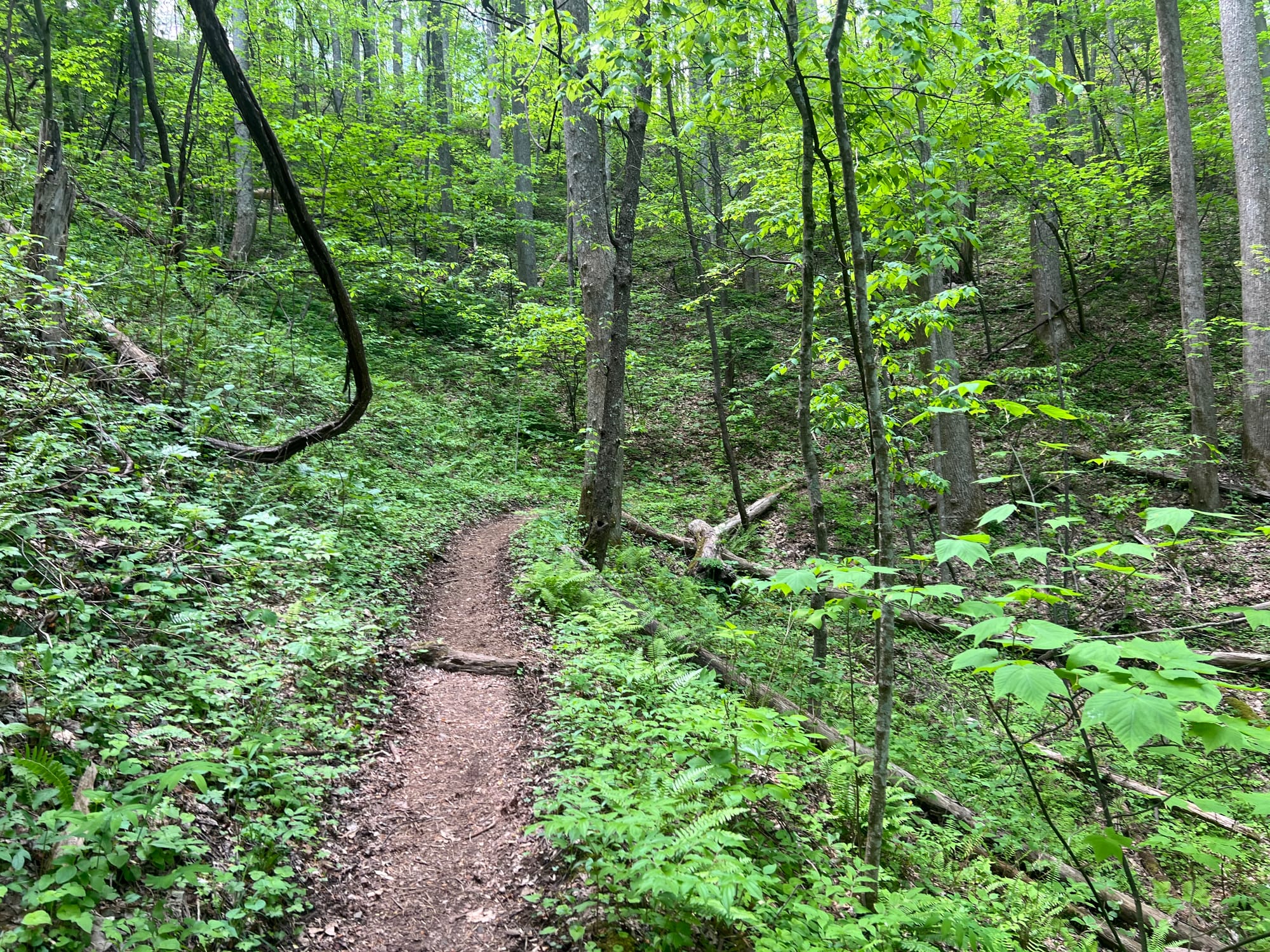
Nonetheless, when I got to Standing Bear on the first day, I felt some real playground anxiety. I moved my pack a few times and sat in a few different places. I didn’t really talk to anybody, let alone make eye contact. I needed one more day than I had to do the whole park, and there weren’t any other roads in the first 35 or 40 miles, so I was only doing half of it. I parked and re-parked my rental car three times, and I barely ate.
I did summon the courage to ask a gentleman sitting in front of his tent a la Rick Rubin where the water was. He was doing nothing at all, so I thought I wouldn’t be bothering him. His name, as written on his tent, was Kitchen Sink. He pointed me back to the kitchen, where there was a sink. I proceeded to over-hydrate while waiting for Maria, one of the hostel owners, to give me a ride.
Well, she was going to do a “shuttle.” These people, always referring to any ride to or from the trail as a shuttle, are more militant about terminology than a phd on an airplane. She had to audible because one half of the laundry system was out, and she had to drive the pickup to bring the dryer down the mountain into town. The other half of the system still worked, but it was a washboard. She told me to wait until Struggle Bus got back, then I could take the Struggle Bus shuttle.
So I sat there for a few hours. I learned that, before the port-a-potties, the place used to have a privy, or moldering toilet. They replaced it because they’re just over the border from North Carolina into Tennessee, and privies are illegal in Tennessee. To be a fly on the wall in that legislative session. Lizard King, who supervised the work-for-stay guests, was playing bluegrass on a few different speakers. The trees hung low and leafy, the temperature rose, and the clouds grew taller with humidity.
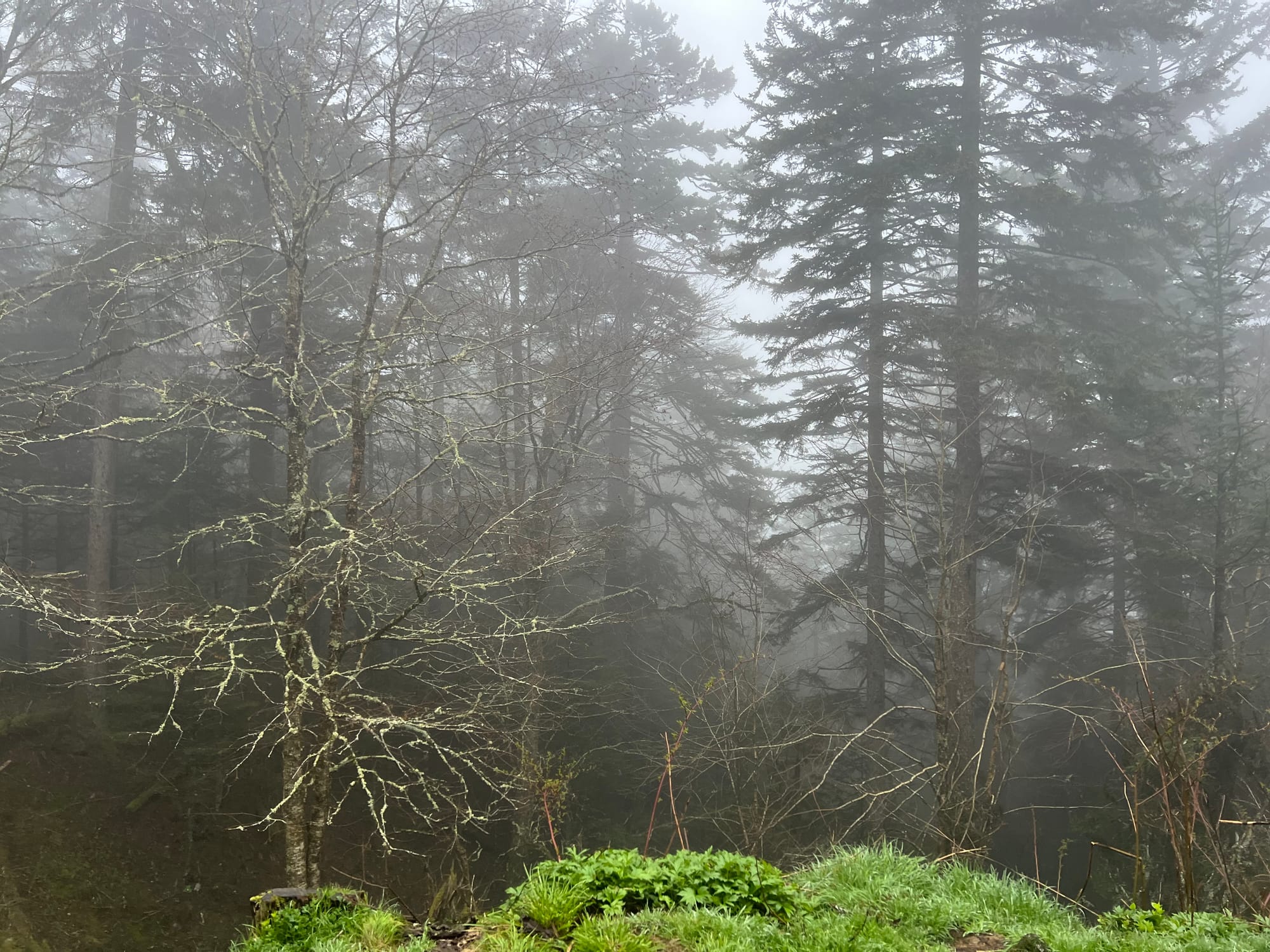
Struggle Bus and I chatted for nigh on two hours on the way down to Kuwohi. How Gatlinburg is such a den of commercial sin, how he had found his way to Standing Bear, and how to identify a rainforest. You’ll know it when you see it. It’s like a fairyland, he said.
Three afternoons later, I bounced through my eighteenth and nineteenth miles of the day up to collect my car from the hostel. I hadn't managed to sniff out the rainforest, but that morning I’d crept through a thick cloud, frozen in pre-dawn limbo. I’d had some good conversations, and I'd gotten to know a few more hikers. The car was, mercifully, where I left it, and not at the bottom of the bank down in the stream bed. I half expected Kitchen Sink’s tent to be sitting back in the same place I’d seen it last.
Struggle Bus saw me gliding up the road and waved hello, as though I were any old hiker, completely without recognition. I waved back with the realization that maybe I have been around the block once or twice and learned a thing or two by now. Maybe I knew enough now to benevolently share tips instead of silently judging or calculating finishing odds. How intimidating it must be to walk the first of an intended 2200 miles, knowing to expect at best a 25% success rate. A few people shared anecdotes of mothers dropping them off at Springer Mountain, cautioning that there was no shame in backing out now.
Once home, I cracked open my notebook to find I’d met Kitchen Sink before. He’d been staying a few days at Shaw’s before continuing southbound in July 2021. I’d had the audacity to tabulate what I thought constituted his chances of making it, given he was pacing toward 95 zeroes. Now, he was starting at least his second hike, reminding me that, 18% or 0%, I do in fact know nothing. The trail provides.
